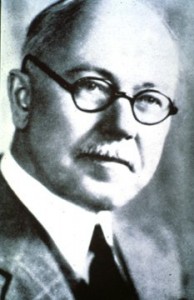A couple weeks back, I had the distinct pleasure of meeting and having lunch with Richard R. Shapiro. We were introduced by a mutual trusted friend, and I knew initially that Richard was a customer experience guru, but very little else. We had communicated and uncovered a common New Jersey connection, and of course, I had checked out his web site (http://tcfcr.com/about-richard-r-shapiro/ ) and LinkedIn profile.
While what I had learned about Richard was truly impressive, it in no way prepared me for the wonderful experience of having lunch with him. At the end of our meeting, he  provided me with a copy of his latest book, The Endangered Customer: 8 Steps to Guarantee Repeat Business. Since I had met and spent time with the author, I could hear his voice in my head as I read. But I assure you, that is not necessary to learn from this book.
provided me with a copy of his latest book, The Endangered Customer: 8 Steps to Guarantee Repeat Business. Since I had met and spent time with the author, I could hear his voice in my head as I read. But I assure you, that is not necessary to learn from this book.
Put simply, the book is well worth the read, even if you consider yourself to be a customer service maven. The “thought provoking questions” in Appendix 2 alone are worth making the effort.
As a starting point, I will list the 8 (important) steps that form the basis of his book:
- Make me feel welcome (hope)
- Give me your full attention (control)
- Answer more than my question (connect)
- Know your stuff (trust)
- Don’t tell me NO (frustration)
- Invite me to Return (feel wanted)
- Show me I matter (caring)
- Surprise me in good ways (feel special)
Most of these may seem obvious to people who have been involved in either B2C or B2B customer and client relationships, so instead of further elaboration, I will recommend reading for Richard’s perspective on these points, a perspective that is very clear and somewhat unique in this day and age when we seek to distill everything into a formula.
There are, however, a couple of the points he made throughout the book, I would like to elaborate on.
The most important point overall is that Richard speaks to all the customer annoyances, both large and small, that can undermine or break a relationship with your organization. In essence, this is really the focus of each of the eight points above. Often these annoyances go unnoticed.
Many organizations feel today that technology can be substituted for human contact, emotion and thought. There certainly is a place for machine technology (AI or machine learning, historical databases) to supplement and support the human-to-human experience, but at this point, the human factor cannot be completely replaced. Nor should it be. So, while marketing automation and CRM can be incredibly valuable tools, they also cannot yet be put on autopilot and allowed to run the show.
This is how we end up with communications with no personality…and communications that make no sense…and communications that fail to build relationships with our customers.
I have seen that even younger generations than myself enjoy human contact, although expectations and tone are very different. All generations still have respect for people who know “things” and can add the additional information into the mix that make the experience better and at the same time, make them feel important and like they have choices.
And it is not just customers that are important: The importance of employees to the mix of relationship building cannot be underestimated. Not only do highly adaptive employees keep the organizations vibrant, but they add to customers feeling connected and add to the continuity of the relationship. Key employees must not be viewed as a cost, but as a resource. These resources, like any other organizational resources, should be protected and cultivated, and allowed to grow and develop.
With this in mind, cultivating long term employees to aid with the customer journey is also a must for most organizations, especially employees that frequently interact with their customers. Long term employees are typically better able and equipped to say “yes” or at least, not say “no”. As Richard points out: “Even when you cannot say yes, you must never say no. Tell customers what you can do, not what you can’t do.”
Employees at the end of the sales process (especially in retail) often determine whether the customer leaves feeling like they had a good, neutral or bad experience. Your front-line team must be able to recognize the signs and empowered to act on this. I have personally seen this in practice first hand, and have seen how much impact to build or save a relationship that a cashier can have, especially one with a level of authority to rectify a situation or at least the mandate to display empathy.
Finally, remember the entire product or service life cycle or what we often call today, the customer journey. Many organizations are great at developing leads, many do an excellent job at point of sale (or bringing the sale to a point of close). Fewer organizations recognize the need for further building the relationship after the sale. This is often because they do not fully grasp the concept that repeat business is better ensured when the relationship is appropriately continued.
All too often when attempted, the effort is a perfunctory thank you email, more efforts to sell additional products or services, or nothing at all. And these contacts often do not provide time for the customer to properly evaluate their decision nor do they fit with the usage cycle.
True relationship builders recognize the value of building customer loyalty after the sale; in other words, closing the loop with our new friend, the customer. Invite the person to return before breaking contact during the sale and tell them how to do it, including how to contact you. Tell them in advance what to do if they have a problem or concern. Make sure to follow up after resolution if they do have a problem or concern. An example from the book highlights a wedding shop that calls after the wedding to see how the event went, and if the bride received compliments and is still pleased with her choice.
This discussion only scratches the surface, as the book is short but also highly compact. There is a great deal packed into this short book, and Richard is an amazing storyteller. I can only state that you should make the effort to pick up and digest this great book.
 In this short chapter, Claude Hopkins talks to service as a viable advertising strategy. He argues that they should, in today’s terms, provide value. He references that they should provide information, that they should educate, that they should cite advantages to the user, and that they should do what they can to eliminate risk on the part of the consumer. Does this sound familiar to us? I would think that it should.
In this short chapter, Claude Hopkins talks to service as a viable advertising strategy. He argues that they should, in today’s terms, provide value. He references that they should provide information, that they should educate, that they should cite advantages to the user, and that they should do what they can to eliminate risk on the part of the consumer. Does this sound familiar to us? I would think that it should. I have been posting quite a bit on LinkedIn and Twitter about artificial intelligence and machine learning, including bots, personal digital assistants and smart home. I have speculated on what the smart phone of the future might look like, especially with advancements in wearables and implants.
I have been posting quite a bit on LinkedIn and Twitter about artificial intelligence and machine learning, including bots, personal digital assistants and smart home. I have speculated on what the smart phone of the future might look like, especially with advancements in wearables and implants. provided me with a copy of his latest book, The Endangered Customer: 8 Steps to Guarantee Repeat Business. Since I had met and spent time with the author, I could hear his voice in my head as I read. But I assure you, that is not necessary to learn from this book.
provided me with a copy of his latest book, The Endangered Customer: 8 Steps to Guarantee Repeat Business. Since I had met and spent time with the author, I could hear his voice in my head as I read. But I assure you, that is not necessary to learn from this book.




